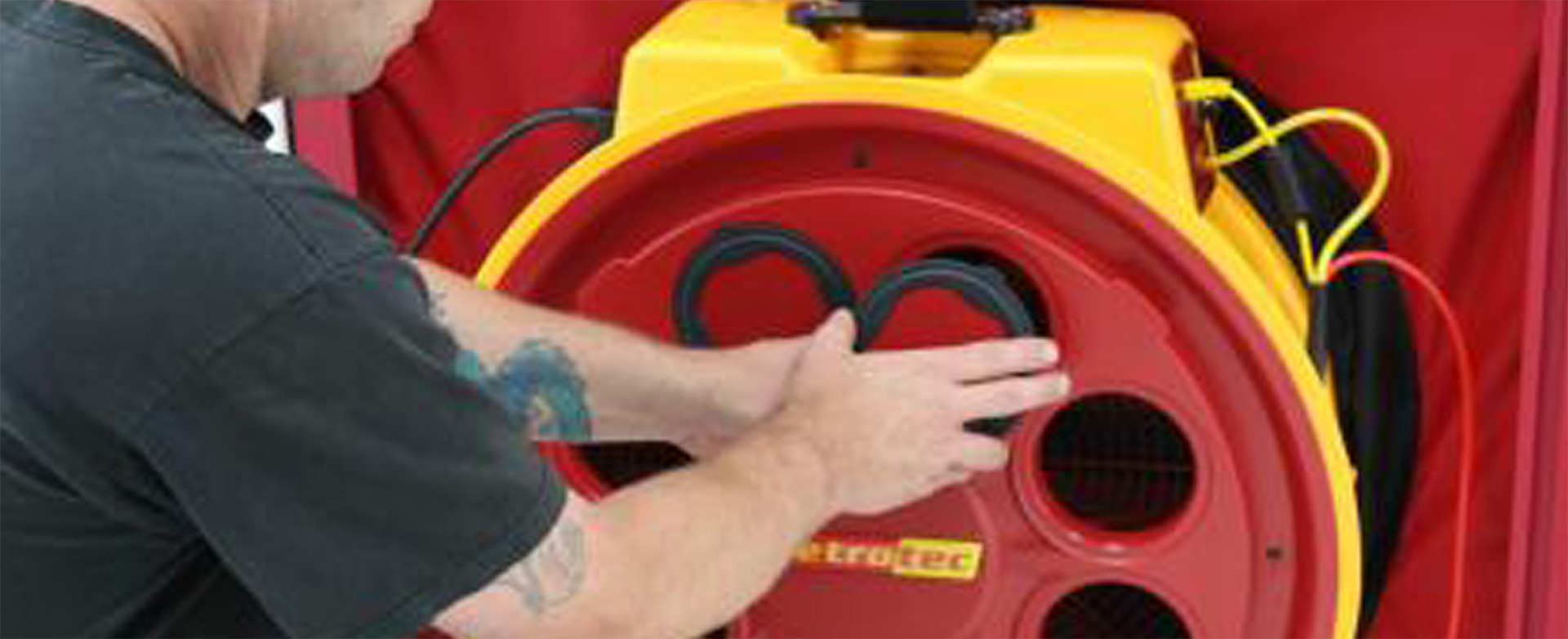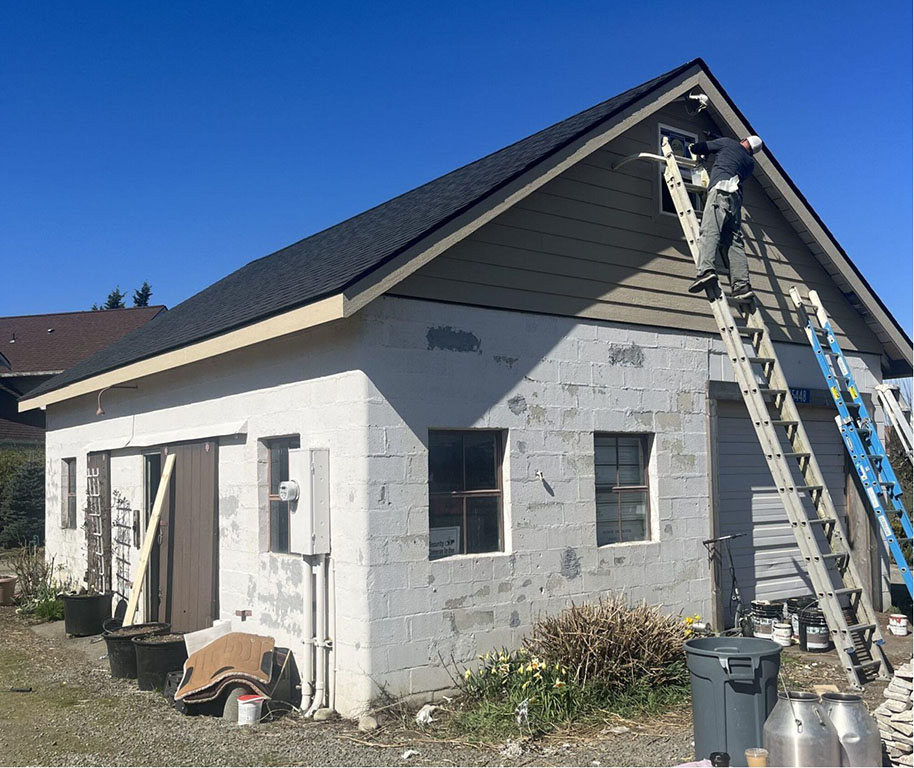A Reflective Journey in Building a Sustainable Floral Cooler
Introduction
As Co-CEO of Retrotec, a company at the forefront of building performance technology since 1995, I've had the privilege of contributing to the development of some of the industry’s leading digital pressure gauges and fans. My name is Ben, and alongside my role at Retrotec, I've embarked on a personal project that leverages my professional expertise for a cause close to my heart – creating a state-of-the-art floral cooler for my wife, Kelli's, business, Country Bouquets.

The Genesis of the Project
Kelli's passion for designing flowers for weddings through Country Bouquets inspired me to apply my knowledge of building science to preserve the beauty of her creations. Flowers, in their delicate splendor, demand precise conditions for storage, a challenge I was eager to tackle. This project wasn't just about building a cooler; it was about creating an environment where beauty and science converge.

Designing with Precision and Purpose
The cooler's dimensions and material choices were meticulously planned to ensure optimal conditions for flower preservation. Measuring 8 feet 4 inches by 9 feet 6 inches, and standing 10 feet tall, this space was engineered to maintain the delicate balance necessary for floral freshness.
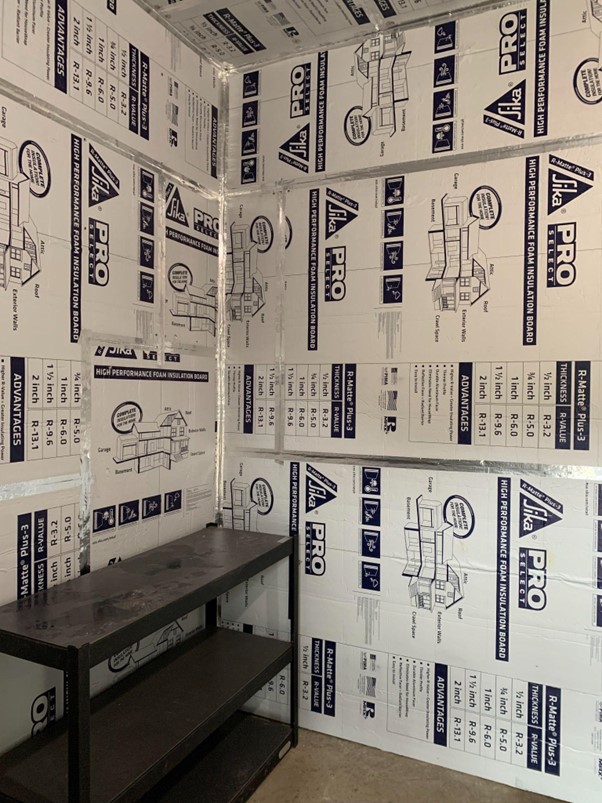
Insulation and Airtightness: A Dual Approach
Walls: Two walls were constructed with concrete blocks which previously existed and then added 2" foam insulation (R-value of 12) for thermal resistance. Foil side facing towards the outside to help reflect the heat back to the outside. The other two walls feature a blend of 1/4" plywood to protect the insulation installed into the wall cavities,, and mineral wool insulation (R-value of 15) for its mold resistance and superior insulation properties in the wall cavities..
Ceiling: We opted for a combination of mineral wool (R-value of 15) and two layers of 2" foam insulation, maximizing the R-value to 39 for top-tier thermal resistance. We could add another two inches here without impacting the internal space of the cooler.
Optimal Conditions for Floral Preservation
Flowers thrive and last longer when stored in conditions that mimic their natural cool, humid environment. The target conditions for a floral cooler are typically:
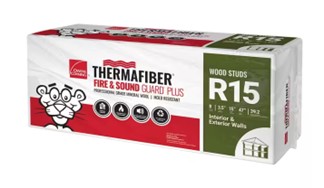
Temperature: Between 34°F and 38°F (1°C to 3°C)
Humidity: Between 90% and 95%
These conditions help slow down the aging process of flowers, keep them hydrated, and prevent the growth of bacteria and fungi.
Technological Integration for Precision and Efficiency
Understanding the critical nature of maintaining these conditions, I installed WiFi-enabled temperature and humidity sensors within the cooler. These sensors allow for real-time monitoring and adjustments, ensuring the environment remains within the target range for optimal flower preservation.
An Innovative Upgrade: Utilizing the Cool of the Night
The latest upgrade to our floral cooler involves a system to bring in outside air during the evenings when the temperature drops below the cooler's target. This natural cooling method reduces the reliance on the modified air conditioner, further lowering energy consumption while maintaining the perfect conditions for the flowers.
This approach not only exemplifies an efficient use of resources but also showcases how technology and nature can work in harmony for sustainable solutions.
Cooling Technology: A CoolBot Revolution
Central to our design was a modified air conditioner, driven by a CoolBot, allowing us to achieve lower temperatures crucial for flower preservation. This innovative approach not only ensures efficiency but also aligns with our goal of reducing energy consumption.
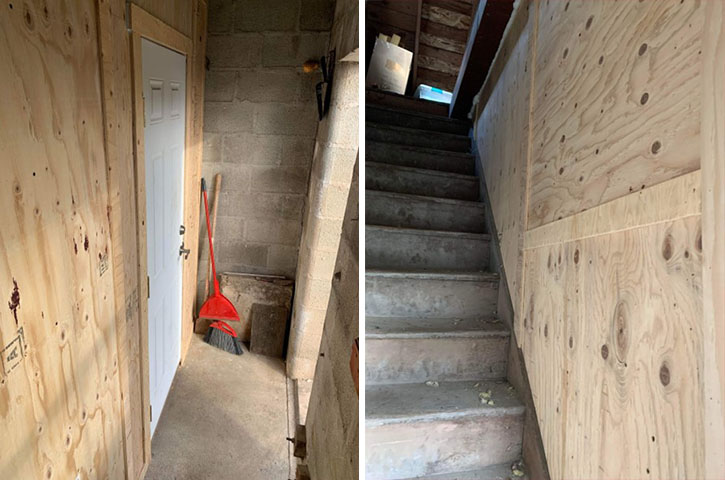
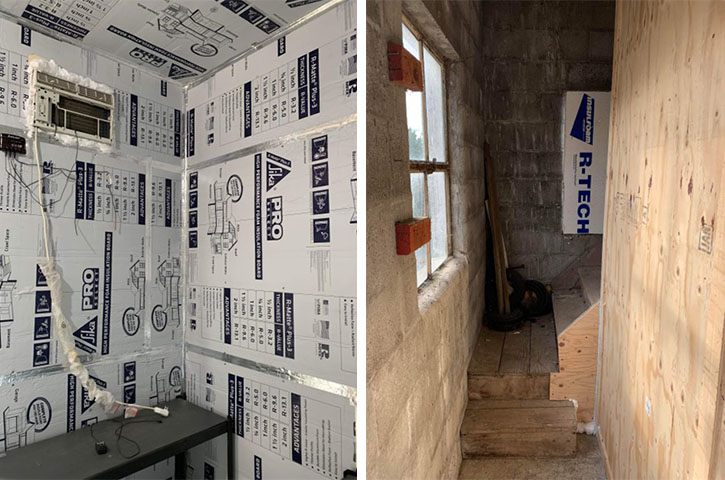
Monitoring and Control: Embracing Smart Technology
To maintain the cooler's internal environment within the ideal range of 34°F to 38°F and 90% to 95% humidity, I integrated WiFi-enabled temperature and humidity sensors. This allows for real-time monitoring and adjustments, a testament to how smart technology can enhance traditional practices.
Navigating Washington's Climate: Supplemental Humidity and Mold Prevention
Operating in the diverse climate of Washington State presents unique challenges for maintaining the ideal conditions within our floral cooler. The use of an air conditioning unit during the warmer months effectively keeps temperatures within the optimal range of 34°F to 38°F. However, it also introduces the need for supplemental humidity to ensure the environment remains conducive to flower preservation.
Supplemental Humidity: A Must for Washington Summers
Given the AC unit's propensity to remove moisture from the air, integrating a humidifier into the cooler setup becomes essential. This is especially true during the summertime when the cooler is in frequent use. By adding moisture back into the air, we can maintain the humidity level at the ideal range of 90% to 95%, crucial for keeping the flowers hydrated and extending their vase life.
Mold Prevention Without a Vapor Barrier
One of the key considerations in designing this cooler was preventing mold growth—a potential risk when introducing supplemental humidity. Typically, a vapor barrier might be used to prevent moisture from entering the wall cavities. However, in this project, I opted against installing a vapor barrier. The rationale was straightforward: I wanted to avoid trapping moisture within the walls, which could create an environment conducive to mold growth.
Instead, the construction materials were selected for their natural resistance to mold. Mineral wool insulation, known for its moisture-resistant properties, was used as part of the wall assemblies. This choice, coupled with careful monitoring of humidity levels inside the cooler, aims to mitigate the risk of mold without compromising the structure's ability to "breathe."
Continuous Monitoring: Key to Success
The implementation of WiFi-enabled temperature and humidity sensors plays a pivotal role in this setup. These sensors allow for real-time monitoring and adjustments, ensuring that both temperature and humidity remain within their respective ideal ranges. This level of control is not just about maintaining optimal conditions for the flowers; it's also a preventive measure against mold growth by avoiding overly humid conditions within the cooler.
Looking Ahead
As we move forward, the cooler's performance in Washington's climate will be closely monitored, particularly the effectiveness of the humidification system and its impact on the internal environment. This ongoing evaluation will help in fine-tuning our approach, ensuring that the cooler not only serves its primary purpose of preserving flowers but also remains a mold-free environment.
By embracing smart technology and applying building science principles, we've created a solution that addresses the unique challenges of floral preservation in Washington State. This project exemplifies how innovation, coupled with a deep understanding of environmental factors, can lead to successful outcomes in specialized applications.
Setting Airtightness Goals: The Blower Door Test
A key component of assessing the efficiency and performance of the floral cooler is the blower door test, a method we at Retrotec are intimately familiar with. This test measures the airtightness of a building and is crucial for identifying leaks and areas where insulation could be improved. For the floral cooler project, setting a target for this test was essential to ensure that the cooler would maintain its internal conditions efficiently, without undue energy loss.
Given the cooler's specific use case and the construction parameters, our goal was to achieve an airtightness level that supports the cooler's temperature and humidity requirements while being energy efficient. Considering the calculated surface area and the square footage of the cooler, we aimed for a target that would be indicative of a well-sealed structure, typically measured in air changes per hour at a 50 Pascal pressure difference (ACH50).
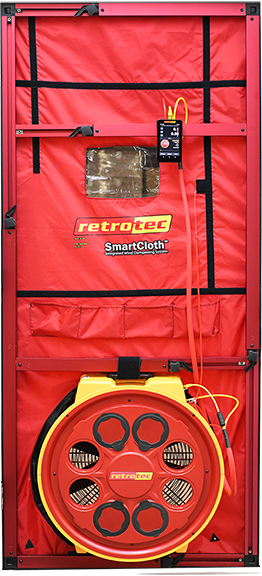
ACH50 Target and Expectations
For residential buildings, a common target for airtightness might range from 3 to 5 ACH50, with more stringent energy-efficient standards aiming below 1 ACH50. For the floral cooler, given its unique requirements and the repurposing of an existing structure, our target was set thoughtfully to balance feasibility with the desired outcome of maintaining optimal conditions for flower preservation.
The specific ACH50 target for this project was established at [Target ACH50], a figure we determined would provide the necessary balance between airtightness and the mechanical ventilation needs of the cooler. Achieving this level of airtightness would ensure that the cooler's internal environment could be controlled accurately, minimizing the energy required to maintain temperature and humidity levels.
Step-by-Step Calculations for Airtightness Testing
Calculating Volume and Surface Area:
The purpose of these calculations is to understand the space within which we aim to maintain controlled temperature and humidity for optimal flower preservation. Given the dimensions of the cooler:
- Length: 8 feet 4 inches (or 8.33 feet, converting inches to feet)
- Width: 9 feet 6 inches (or 9.5 feet)
- Height: 10 feet
Volume Calculation:
The volume of the cooler is found by multiplying the length by the width by the height.
Volume=Length×Width×Height
Volume=Length×Width×Height
Volume=8.33 ft×9.5 ft×10 ft=791.85 cubic feet
Volume=8.33ft×9.5ft×10ft=791.85cubic feet
Surface Area Calculation:
The surface area is crucial for understanding the potential for heat loss and the effectiveness of the insulation. To calculate the surface area of all the cooler's walls and ceiling:
Two ends:
- 2×(Width×Height)
- 2×(Width×Height)
- Two sides:
- 2×(Length×Height)
- 2×(Length×Height)
- Ceiling and floor:
- 2×(Length×Width)
- 2×(Length×Width)
Let's calculate the two ends, two sides, and ceiling/floor separately and sum them up.
Determining ACH50 using CFM:
ACH50 represents the Air Changes per Hour at a 50 Pascal pressure difference and is a standard measure of airtightness. The formula to calculate ACH50 from the blower door test results, which provide CFM (cubic feet per minute), is:
ACH50=(CFM50×60Volume)
ACH50=(
Volume
CFM50×60
)
where:
- CFM50 is the cubic feet per minute of air movement measured by the blower door at 50 Pascals of pressure difference.
- The multiplication by 60 converts CFM into cubic feet per hour (CFH).
To understand the airtightness of the cooler, I'll conduct a blower door test and use the CFM50 value provided by the test equipment. Given the volume calculated above, we can substitute the specific CFM50 value from the test and our known volume to calculate the ACH50. This value will inform us about the cooler's airtightness, guiding further insulation and sealing efforts.
Example Placeholder for ACH50 Calculation:
Assuming a hypothetical CFM50 result from the blower door test is [Insert CFM50 Result Here], we would calculate ACH50 as follows:
ACH50=([ 50 ]×60791.85)
ACH50=(
791.85
[InsertCFM50ResultHere]×60
)
This calculation will provide a clear metric to evaluate the effectiveness of our construction in terms of airtightness.
The Impact and Future Plans
This cooler represents more than just a storage solution; it's a testament to the synergy between building science and floral artistry. It underscores our commitment at Country Bouquets to provide only the freshest flowers, preserved in an environment built on the principles of efficiency and sustainability.
As we look forward to further enhancements, including the strategic introduction of outside air during cooler evenings, our journey continues. This project is a reflection of our dedication to innovation, both at Retrotec and Country Bouquets, ensuring that every wedding is adorned with the beauty of perfectly preserved flowers.
Stay tuned as we share the results of our upcoming blower door test and explore the intersection of passion and technology in our quest for perfection.
